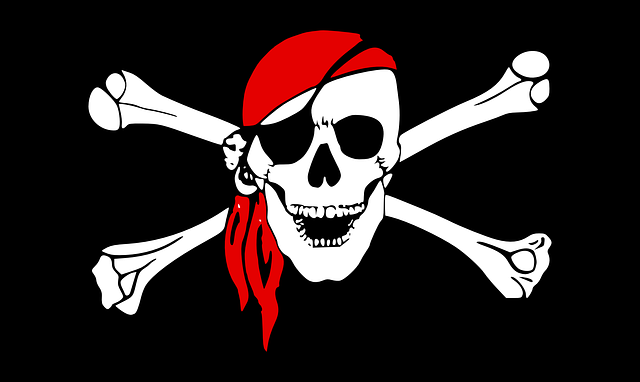
Aaaaaaaarrrrrrre you running a pirate themed camp or event this summer? Or planning ahead for Talk Like a Pirate Day, September 19? Well shiver me timbers—it's time for pirate science!
Pirate themed hands-on science programs, like this spring's Science of the High Seas camp at Ontario Science Centre, combine the classic fun of pretend-pirate exploration with real-scientist discovery. "Campers had a great time mastering maps to find out if 'X marks the spot' as they explored navigation and map making," says Angie Aucoin, Ontario Science Centre's Recreational and Family Program Leader. Over five days, pirate campers "walked the plank" into water physics and designed a ship fit for the high seas, pointed their spyglasses toward skeleton science, increased their "knotical" knowledge, conquered scurvy, and lived to tell the tale of the Desert Island Survival Challenge.
Learners anywhere can discover the science of how pirates and sailors of old did what they did, with Howtosmile.org activities about oceanography, meteorology, chemistry, astronomy, cartography, vision science, nutrition and more. Start by having learners set up their own "Pirate's Log"—a pirate-ology field journal—where they can keep notes, somewhat like in the Science Journal: Questions and Words activity.
Get them to write down words and ideas as they try to answer questions like: How did pirates carry food for long ocean voyages without any refrigerators? How did they get fresh water to drink without bottled water? What tools and data did they use to find their way without GPS? How did they find buried treasure without high-tech imagery to "see" underground? Explore pirate STEM in the SMILE activities listed here, or choose your own from the Howtosmile.org collection.
Boat Building: How did huge pirate ships and other sailing vessels stay afloat? Discover buoyancy, Archimedes’ Principle, and how to build a boat that will float.
Maritime Munchies: At sea, "hardtack" and "swanky" were foods that could last. Cook some up and compare them to what you eat today on a long trip.
Testing Vitamin C: If pirates and sailors didn't get enough foods with Vitamin C on a voyage, they developed a disease called scurvy. Use chemistry to determine which of two orange juice drinks (natural and artificial) has more Vitamin C.
Out to Sea with Zheng He: How did pirates and sailors find their way, far from land? Examine a map based on a 15th-century explorer's ocean voyages, and make a simple compass.
Stargazing: Without advanced technology, pirates and sailors navigated partly by watching the night sky. Keep a record of what you see in the sky by drawing constellations and the Moon, and making note of the weather and other conditions.
How Much Water Is in that Cloud?: Pirates and sailors could gather fresh drinking water when it rained. How much rainwater could they get from clouds?
Why Do Hurricanes Go Counterclockwise in the Northern Hemisphere?: What could pirates and sailors do when a hurricane was coming? Play a game with a ball to demonstrate the Coriolis force, and understand what pirates and sailors knew about the motion of hurricanes and typhoons.
Right Eye/Left Eye: Pirates and sailors could spy land far away, through a handheld telescope. Which of your eyes do you use, and why, when you look through a tube to sight an object?
Captain Cartography: How did pirates remember where to find their buried treasure? Create a reference map of an important part of your world.
Mint Your Own Coin: Pirates stashed away coins etched with the faces of kings and queens. Create your own piece of history, by making a coin that shows something special about your life.
Fair Shares—Predict equal shares: How did pirates divide up their treasure equally? (Or not equally?)
